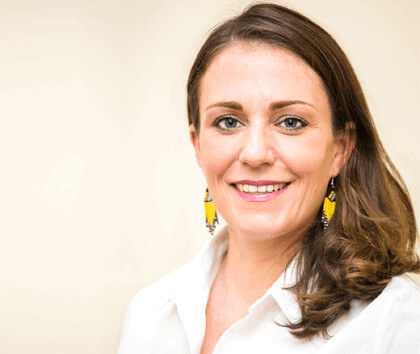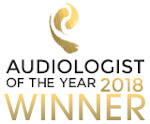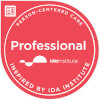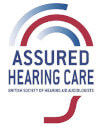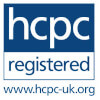The Hearing Knowledge Hub
-
Gene therapy helps boy hear for the first time
Gene therapy enables boy to hear for first time Aissam Dam, a Moroccan boy who has a rare form of deafness and was born with profound hearing loss in both ears, has become the first person to receive a new gene therapy procedure. The gene therapy was to correct an abnormality in a single, very rare gene, and it has enabled Aissam to hear sounds for the first time in his life. Scientists and doctors at the Children’s Hospital of Philadelphia, operated on 11-year-old Aissam in October last year to introduce a single dose of the gene therapy into his inner ear. Four months later his hearing in the treated…
-
3rd March is World Hearing Day
Today is World Hearing Day, and this year’s theme is ‘changing mindsets’. It’s made us think how hearing loss is often associated with older age. However, some concerning recent studies highlight how anyone of any age is at risk of hearing loss, particularly due to the impact of modern technology. Some concerning numbers Let’s take the new research from auditory training app, Eargym, which studied the hearing of over 1,000 people over a four-month period. Researchers analysed the results of a scientifically-validated speech-in-noise activity delivered via the app, and of the 16-35 year olds who completed this activity, a quarter (24 percent) were categorised as having hearing loss, with a…
-
Im-paw-tant information about dog hearing.
It’s not uncommon for our pets to live to a ripe old age these days thanks to the wonders of veterinary science. However, even if the latest drug treatments can keep them healthy for longer, there’s not much that can be done about hearing loss. Different causes of hearing loss Hearing loss seems to be a fact of older age for our dogs as much as it is for we humans. Some dog breeds are also susceptible to deafness (dalmatians, for example). And then there are working dogs who may lose their hearing through their work with the military or police. But if an audiologist can work with doctors, why…
-
Tinnitus in the news. A new chat bot to help sufferers.
It was good to see a tinnitus app, called MindEar, make the headlines in the Guardian recently. When you suffer from tinnitus, the nature of the condition can make it easy to feel isolated, so the more coverage tinnitus gets, the more people will start to understand the condition and break down some of the myths surrounding tinnitus. The MindEar app provides cognitive behavioural therapy (CBT) via a chatbot, along with other approaches such as sound therapy. CBT can help people suffering from tinnitus to reduce their emotional reaction to the sound, which enables the brain to tune it out. The app is designed to provide an alternative to in-person therapy which…
-
Have you heard of Paget’s disease?
Today is Paget’s Awareness Day, which works to raise awareness of Paget’s Disease of Bone. One of the symptoms of Paget’s is hearing loss. Paget’s disease affects the normal repair and renewal process of bone. It’s a common disease in the UK – the most common after osteoporosis and is thought to be due to a combination of genetic and environmental influences. Many people who have Paget’s don’t have symptoms and never develop complications. About 1% of people in the UK over age 55 are thought to be affected. Any bone can be affected by Paget’s but the most commonly affected are the pelvis, spine, thigh bone, shin and skull.…
-
Having the conversation about hearing loss
How to have the difficult conversation about hearing loss If, over the festive season, you noticed a good friend or loved one was struggling to keep up with conversation, now is a good time to talk to them about it. While it’s understandable to want to avoid this potentially tricky topic, there are ways to make the conversation a positive experience for you both. Five helpful tips: 1. Timing is everything: Find a time when you’re both relaxed. Make sure your loved one can see and hear you clearly, so don’t opt for a busy café or restaurant. Somewhere where they feel at ease is best. 2. Take their lead: Rather than…
-
Your rights in the workplace – access to work
If you’re on the look-out for a new role, look for an employer that’s part of the Disability Confident scheme. New year, new job? A new year is typically the time when many people think about making changes in different areas of their life. If you’re living with hearing loss or auditory processing disorder (APD) and struggle in your current role to get the support you need, you might be looking around for a new opportunity. Hearing loss and deafness affects 5 million people of working age in the UK, or around 12 in every 100 employees. Many employers recognise that hearing loss or APD isn’t a barrier to excellence…
-
Hearing aids reduce the risk of falls
Wearing hearing aids can reduce the risk of falls! According to the NHS, around one in 3 adults over 65 and half of people over 80 will have at least one fall a year. While most falls won’t result in serious injury, those that do can cause broken bones as well as much worse health effects. Studies have shown that older adults with mild hearing loss have double the risk of falling than those without hearing loss. While it’s not yet entirely clear how hearing loss increases the risk of falling, it’s known that hearing and balance are connected because they share a common nerve pathway to the brain. Recent…
-
What is otosclerosis?
People often think of hearing loss as being something older people get, but there’s one middle ear condition – otosclerosis – that can develop in your teens and young adulthood, and where pregnancy is even a risk factor. What causes otosclerosis? Otosclerosis isn’t a common hearing condition. About one or two people in 100 develop it, but it tends to develop between the ages of 15 and 35. It’s caused when the stapes, the smallest bone in the body but one which is vital to our hearing, gets fixed to the surrounding structure and stops vibrating. Because it’s no longer moving, the stapes stops transmitting sound to the inner ear,…
-
Game changing clinical trials coming soon!
A cell therapy to improve hearing could transform the lives of millions of people with hearing loss, new research suggests. The therapy will see the first clinical trial of a stem cell treatment for hearing loss, building on research that resulted in 40% improved hearing in preclinical tests. Sheffield-based biotech company Rinri Therapeutics hopes to start clinical trials in the next two years in people with severe-to-profound age-related hearing loss. Rinri’s work was founded on pioneering research into regenerative cell therapy, led by Professor Marcelo Rivolta at the University of Sheffield. Rinri’s cell therapy, Rincell-1, is for patients with auditory neuropathy, a form of hearing loss which occurs when sounds…



